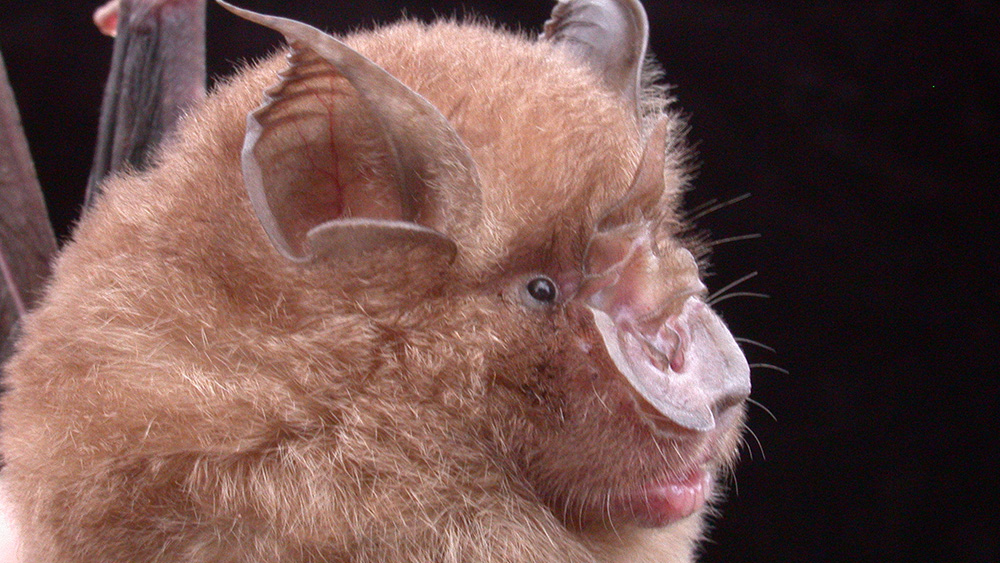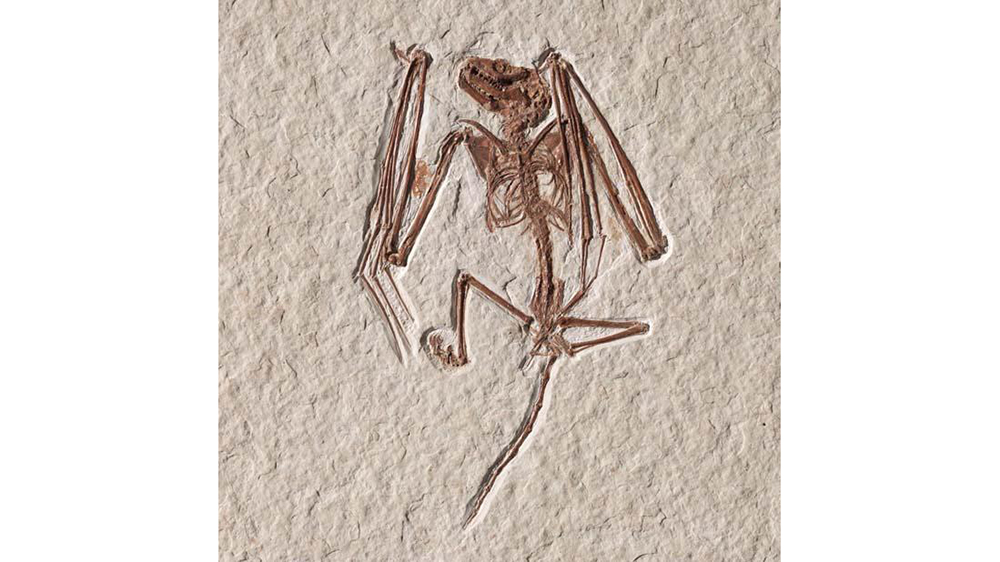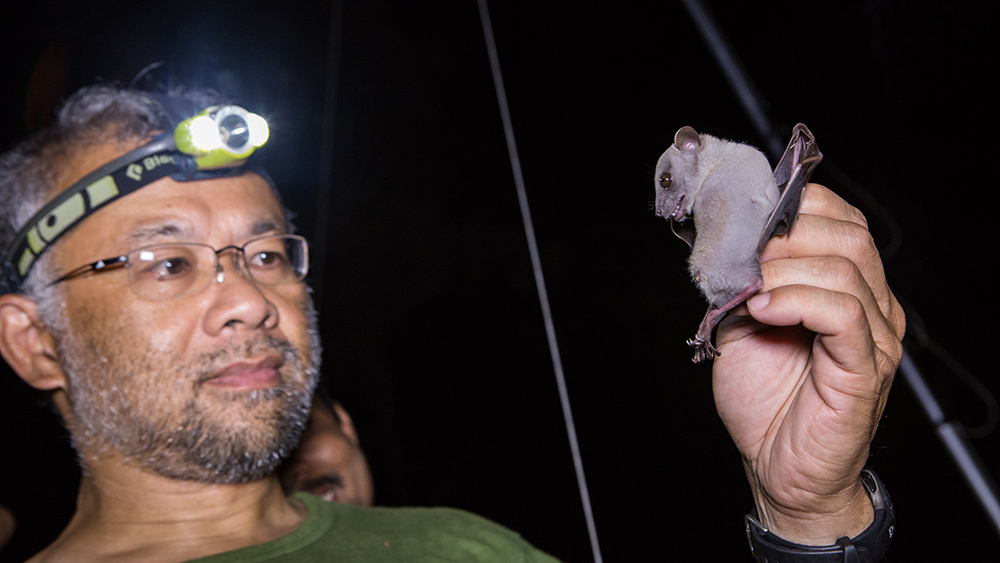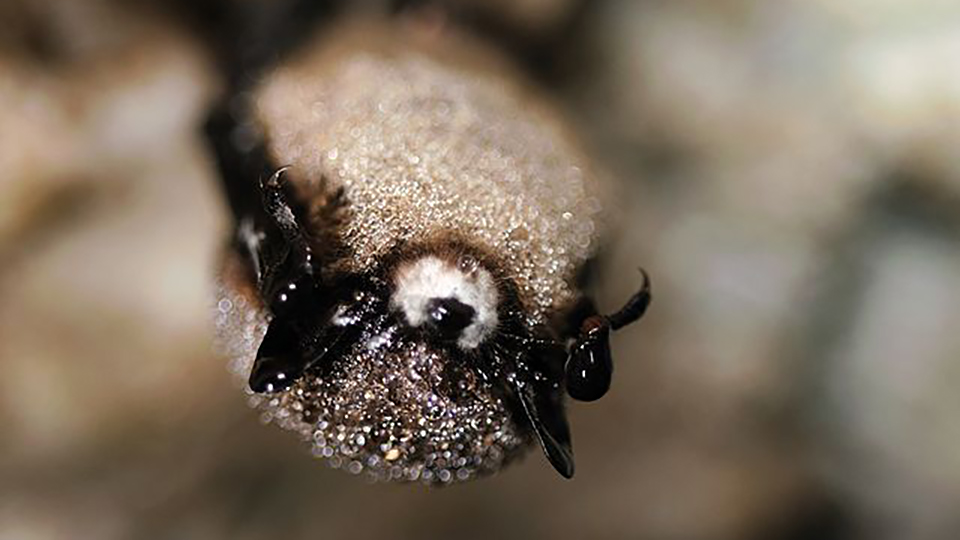Ask ROM Anything: Burton Lim
Category
Audience
Age
About
Every Thursday at 10 am on Instagram we chat with a different ROM expert ready to answer your burning questions on a different subject. This time on Ask ROM Anything, Burton Lim assistant curator of mammalogy for over three decades joins us.
Burton’s main interests are the biodiversity and evolutionary relationships of mammals, with a focus on bats. He received his PhD in ecology and evolution from the University of Toronto. One of the things he loves about his job is the fieldwork, which has taken him to about 30 countries (and counting).
Ask Burton Anything
Q. What is an unusual defense tactic a bat species have that people might not know about?
A. People may not know that there are no natural predators that specialize on bats. So, their unusual defense tactic is a combination of being relatively small, they fly, and are active at night. This makes it difficult for animals to catch them.
Q. Why do some bats have very strange noses?
A. That strange looking structure is called a noseleaf and is used to help the bat focus or direct its echolocation signal while flying around at night.
Q. Do all bats hang upside-down? It seems like such a silly adaptation.
A. Only a few of the more than 1,400 species of bats don't hang upside-down. The disc-winged bats roost head-up in newly sprouting heliconia leaves that are still furled up.
But hanging upside-down is a good adaptation for bats because it takes a bit of wing flapping before they can take off. Bats need to drop a bit from there cave ceiling or tree where they live to start flying.
Q. How can you make your garden/yard more bat friendly?
A. You can put up a bat house in your backyard! Here's some info on how to build your own.
Q. Would you rather fight one human sized bat, or 50 regular bats?
A. Tough question. Probably 50 regular bats because one human-sized bat would be pretty freaky!
Q. Where do micro bats live?
A. Microbats live on every continent except Antarctica. Megabats live primarily in tropical areas of Africa, Asia, and Australia.
Q. If you can pick, what is (are) your favourite breed(s) of bat and why?
A. I'm going to give a broader answer and say my favourite family of bats is the sheath-tailed bats. I have a personal attachment to these bats because I did a PhD dissertation on them!

Q. How do coronavirus's spread to humans from bats?
A. Coronaviruses usually spread to humans through an intermediate host, not from bats directly. During the 2003 SARS, it was thought that palm civets passed it to humans in a live animal market. Similarly, for the current Covid-19 pandemic, pangolins have been implicated. So, the problem is live markets where wild animals are unnaturally brought together giving the opportunity for viruses to jump to different species and spread to humans.
Q. Do bats form relationships within colonies? Do they show affection for one another?
A. Yes, but how much of a relationship is formed depends on the species. For some of the huge colonies of free-tailed bats, the relationship is between the mother and her young, which she will recognize partly by smell. Other smaller colonies are a male with a harem of females that he defends from other interloping males.

Q. What is the bat's closest living relative?
A. Not a simple question to answer because bats are so distinctly unique from all other mammals. In the branches of the tree of life, bats are in a larger group of mammals that include many diverse species such as whales, hoofed mammals, carnivores, and pangolins. The branch below this group that includes bats is composed of mammals such as shrews, moles, and hedgehogs. But keep in mind that bats are an old group with the fossil record going back 52 million years ago and they are unmistakably bats with wings even way back then!
The ROM’s collection includes a fossil of one of these early bat species.
Q. Why do people assume that bats are blind?
A. I think because they fly around at night when it is dark. But we started to understand that this is not true only in the 1940s when equipment was able to record the ultrasonic calls that bats were using to navigate. Covering up their eyes didn't stop them from flying around obstacles, but blocking their ears and mouth did.

Q. How can I develop a career working with bats?
A. Going to university or college to study bats is a good start. Then getting hands on experience working on bats also helps.
Q. What are your favourite books about bats?
A. A couple of good recent bat books are Bats: A World of Science and Mystery by Brock Fenton and Nancy Simmons; and Bats: An Illustrated Guide to All Species by Marian Taylor and Merlin Tuttle.
Q. What's the most surprising thing people get wrong about bats?
A. What I find that people get wrong about bats is that they are bad and should be feared. Bats are good for the continued health of tropical forests as flower pollinators and seed dispersers. They are also voracious eaters of insects, some of which do damage to agricultural crops. So bats have an economic impact that is not immediately obvious to most people

Q. How worried should we actually be about white nose syndrome?
A. We should be very worried about white nose syndrome because it has killed millions of bats in North America since being discovered in 2006. It is an invasive fungus that is native to Europe and Asia that lives in the soil of temperate/cool caves. The bats here do not have an immune system to fight it off. Bats can eat up to their body weight each night in insects, so that is a lot of potential pests not being consumed, including insects that may do damage to food crops
Q. Which bats are the most endangered?
A. Bats in the flying-fox family are the most endangered. About half of the 188 species are considered threatened. This family is found in tropical areas of Africa, Asia, and Australia.
Q. What is bat family structure like? Do babies stay with their own family (herd? flock?) forever?
A. Once the young are able to fly and get their own food, they are pretty much on their own. For large colonies, they may return to the same roost such as a cave but as adults they are not specifically with their family. For species that roost in smaller groups, the young will go off and start their own family.
Q. How do bats show affection?
A. Bats do a lot of grooming within a colony. This will remove ectoparasites, but also good for group bonding.
Q. Have you ever visited a bat colony? If so where was the largest one?
A. The largest bat colony I've visited was in Mulu National Park in Sarawak, which is the Malaysian part of Borneo. It had about 2 million bats! The bat exodus started in the late afternoon and there was a continuous stream of bats flying out for about 2 hours.
Q. Is there anything that we can do to help bats avoid getting white nose syndrome?
A. Yes, if you are a cave explorer make sure to thoroughly clean all of your equipment, especially the soles of your boots so that the WNS fungus doesn't get transferred to the next cave you go into. And if you see any bats in a cave, please leave immediately and don't disturb them. This will help stop the spread of the disease and ensure a healthy bat population.
Q. Why are bats so cute?
A. I love this question! Bats are so cute because people never really get a chance to see them up close. They get to see that the >1,400 species of bats are very different with some having big ears, or white stripes on their back, or elaborate folds of skin on their faces - the noseleaf to help in echolocation. Bats are cute and amazing!




